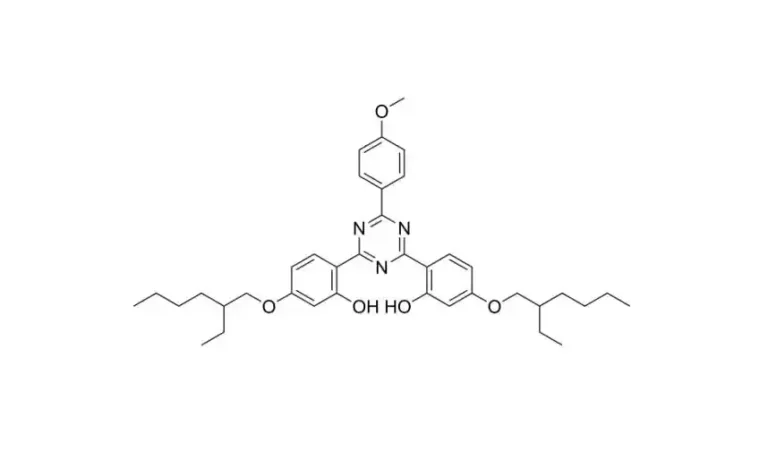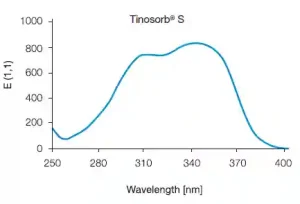Be amazed by how Bemotrizinol’s changing the game in sun protection with its wide-ranging UV shield and exceptional durability! Dive into this blog to discover its makeup and how it boosts sunscreen products, making it a popular pick for reliable and eco-conscious sun care options in 2025!
What is Bemotrizinol?
When it comes to shielding yourself from the sun’s rays effectively, is bemotrizinol‘s role significant? Exploring its characteristics and uses reveals why it shines compared to sunscreen components. Grasping its makeup and how it fits into sunscreens is crucial for understanding how it helps in guarding against damaging UV rays.
The Chemical Composition of Bemotrizinol
Bemotrizinol is an ingredient found in sunscreens under trade names like Tinosorb S or Bisoctrizole that offer wide-reaching protection against UV rays.
How Does Bemotrizinol Work in Sunscreens?
To understand how effective bemotrizinol is in products it is important to grasp its role in sunscreen formulations. It not only provides protection, against both UVA and UVB Rays but also enhances the overall effectiveness of the sunscreen product.
Mechanism of Action for UVA/UVB Protection
When Bemotrizinol is in action it absorbs rays and transforms them into safe heat by a photochemical mechanism. This feature of being able to absorb a range of UV radiation—including UVA (320–400 nm) and UVBs (280–320 nm)—makes it a versatile protective substance. Unlike filters that focus only on particular wavelengths, bemotrizinol offers a broader safeguard against sun harm.
Comparison with Other Sunscreen Filters
When you compare bemotrizinol to common sunscreen ingredients such as oxybenzone or avobenzone, you can see clear benefits. Unlike conventional filters that may break down quickly in sunlight or have a restricted range of protection, bemotrizinol displays excellent photostability and offers a wider spectrum of coverage. This durability results in fewer applications required during the day, offering convenience without compromising safety.
Why is Bemotrizinol Considered a Leading Choice for 2025?
When considering the future of sun protection advancements, bemotrizinol stands out as a choice due to its unique qualities. It offers more than protection from UV rays; it also takes into account environmental and health factors.
Advancements in Sun Protection Technologies
Sunscreen technology is constantly improving to focus on effectiveness, as well as the user experience and environmental impact considerations in mind. Bemotrizinol plays a role in this progress by providing better protection against sunlight exposure and working well with other modern ingredients. With research enhancing sun care products, the versatility of this filter makes it a popular choice for developing new formulations.
Environmental and Health Benefits
More and more people are factoring in issues when making purchasing decisions these days. The use of Bemotrizinol is gaining attention for its impact on the environment compared to older filters that can harm coral reefs. Also, some research suggests that it doesn’t penetrate the skin much and has a risk of causing allergies; this helps to address worries about the health effects of using certain types of sunscreen over a long period.
Regulatory Approvals and Global Acceptance
Regulatory agencies worldwide have recognized the safety and efficacy of bemotrizinol products as it has been approved by authorities in Europe and Australia, as well as gaining acceptance across various markets globally for enhanced sun protection solutions.
How Does Bemotrizinol Enhance Sunscreen Formulations?
Bemotrizinols importance in improving sunscreen formulas goes way beyond its advantages, as it plays a crucial role in how it blends with other components and boosts the overall stability of the product.
Synergy with Other Active Ingredients
When combined with zinc oxide or titanium dioxide, Bemotrizinol enhances UV protection in a way that benefits different consumer preferences and maintains superior protective qualities in products developed by formulators.
Stability and Longevity in Sun Exposure
Bemotrizinol is known for its ability to remain stable when exposed to prolonged sunlight—a feature that sets it apart from other filters that tend to degrade quickly under sunlight exposure and lose their effectiveness over time. Thanks to its enduring stability under sun exposure conditions, bemotrizinol provides protection consistently throughout its usage periods, making it a great choice for formulations designed to last long hours.
Consumer Preferences and Market Trends
The current trends in the market show an increasing need for sunscreens that protect without sacrificing the style or safety features that consumers look for in skincare products these days.
When you grasp how bemotrizinol works and its advantages in products, you’ll see its importance as a key ingredient that meets the growing need for reliable and sustainable sun protection options.
Who is BFP and Why Are They a Reliable Supplier of Bemotrizinol?
When you’re exploring the world of development looking for reliable suppliers is key to your success! BFP is a trusted source of bemotrizinol that stands out in the industry with its standing expertise and dedication to ensuring quality standards are met every step of the way. Sourcing bemotrizinol from BFP gives you peace of mind knowing that the ingredients are consistent, crucial factors for creating sun protection products that truly work.
With its background in chemical manufacturing, BFP guarantees that its bemotrizinol complies with strict safety and effectiveness requirements. They conduct tests to confirm the durability and efficiency of their products in different scenarios. This commitment to quality assurance not only boosts the trustworthiness of bemotrizinol but also promotes its use in a variety of sunblock blends worldwide.
Conclusion
Recognizing the impact of bemotrizinol on sunscreens highlights its significance as a UV protector for the future beyond 2025 and onwards. This ingredient’s capacity to offer protection against UVA and UVB rays along with its positive effects on both the environment and health makes it a forward-looking option for developers striving to address changing consumer needs. As governing bodies increasingly acknowledge its safety and effectiveness, the widespread adoption of bemotrizinol is expected to grow, paving the way for enhanced access to cutting-edge sun care solutions.
FAQs About Bemotrizinol in Sunscreens
Is Bemotrizinol Safe for All Skin Types?
When we talk about components and their safety on various skin types, it is crucially important to consider Bemotrizinol’s reputation for being gentle on the skin and causing minimal allergic reactions. This makes it a great choice for people with skin as it doesn’t penetrate deeply into the skin, which helps in lowering the chances of any irritations occurring. Especially valuable for those with sensitive and delicate skin concerns.
How Does Bemotrizinol Impact the Environment?
Concerns about the effects of sun care product development are increasing steadily as Bemotrizinol is acknowledged for its minimal impact on the environment in comparison to certain conventional filters that are associated with harming coral reefs. Bemotrizinol’s lack of bioaccumulation, in aquatic settings supports sustainable efforts to protect marine ecosystems while ensuring effective UV protection is maintained.
Can Bemotrizinol Be Used in Combination with Other Filters?
Bemotrizinol flexibility extends to its ability to work well with other sunscreen ingredients, such as zinc oxide or titanium dioxide, boosting the overall UV protection provided by the product formulations created by formulators for a diverse array of consumer preferences while upholding stringent protective measures.
When you delve into these asked questions about bemotrizinolll, you’ll grasp a better insight into how it functions in present-day sunscreen products and its capacity to tackle upcoming issues in sun protection advancements.














